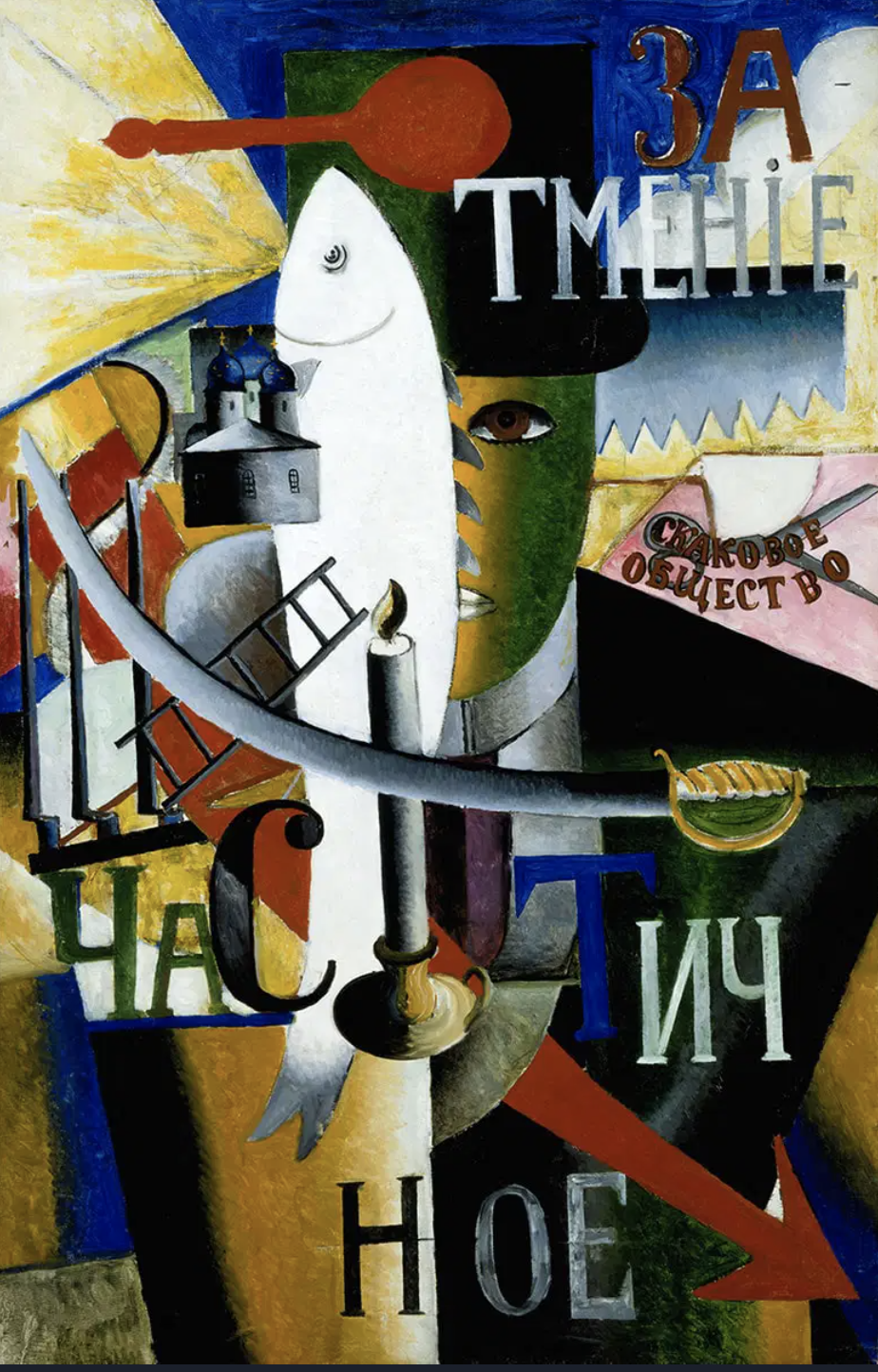Kazmir Malevich
Kazimir Malevich was a pioneering Russian artist and a central figure in the development of abstract art. His bold vision transcended the conventional boundaries of representation, leading him to create works that provoke deep emotional engagement. Malevich’s revolutionary ideas on art and form culminated in his iconic invention of *Suprematism*, an abstract movement focused on the supremacy of pure feeling over the depiction of the physical world.
Kazmir Malevich, an Englishman in Moscow, 1914
Kazmir Malevich, The Woodcutter, 1912
Among Malevich’s most famous works is *Black Square* (1915), a stark, geometric composition that has come to symbolize the very essence of abstraction. The painting, a simple black rectangle on a white canvas, invites viewers to confront their own emotions and ideas about the nature of art, breaking free from traditional perspectives. This work—and others like *White on White* (1918)—expresses his desire to liberate art from the constraints of representational imagery, offering instead a visual language that speaks directly to the subconscious.
Malevich’s compositions, characterized by minimalist forms and intense emotional undercurrents, inspire both contemplation and awe. His innovative approach to color, shape, and space elicits a profound sense of both transcendence and alienation, urging the viewer to question the relationship between form, feeling, and reality. Malevich’s art resonates as a radical departure from the past, and his works continue to challenge the boundaries of art and perception.
Kazmir Malevich, Supremus 56, 1915
In the later years of his life, Malevich lived and worked in Leningrad (now St. Petersburg), where he faced increasing political pressures under the Soviet regime. Despite the rise of Socialist Realism and the rejection of avant-garde art by the state, Malevich continued to paint and lecture, remaining steadfast in his belief in the emotional power of abstract art. He retired in relative obscurity and passed away in 1935, but his legacy has grown to immense significance, influencing generations of artists and cementing his place as one of the most transformative figures in modern art history.
Kazmir Malevich, Triumph Of Heaven, 1907



